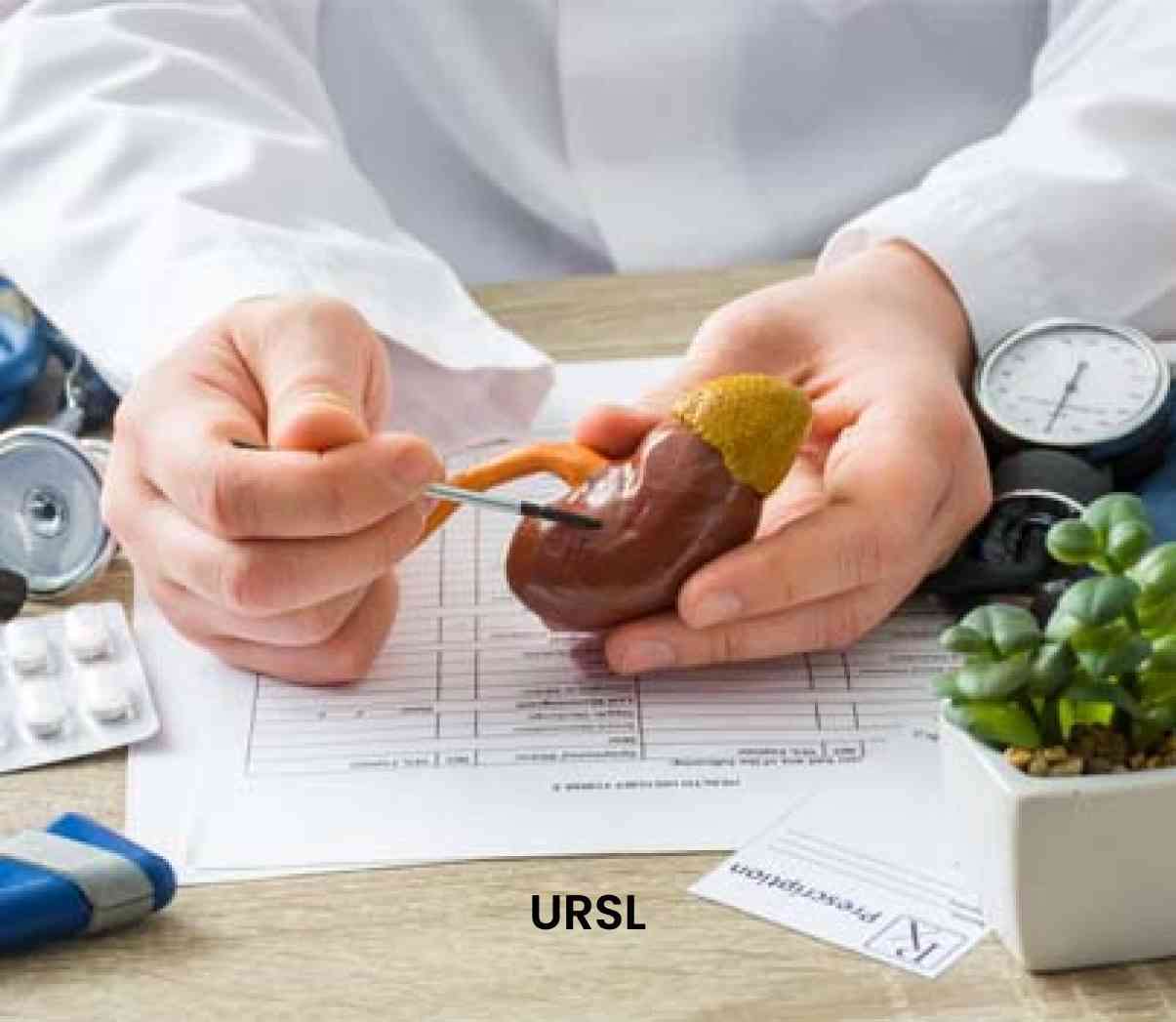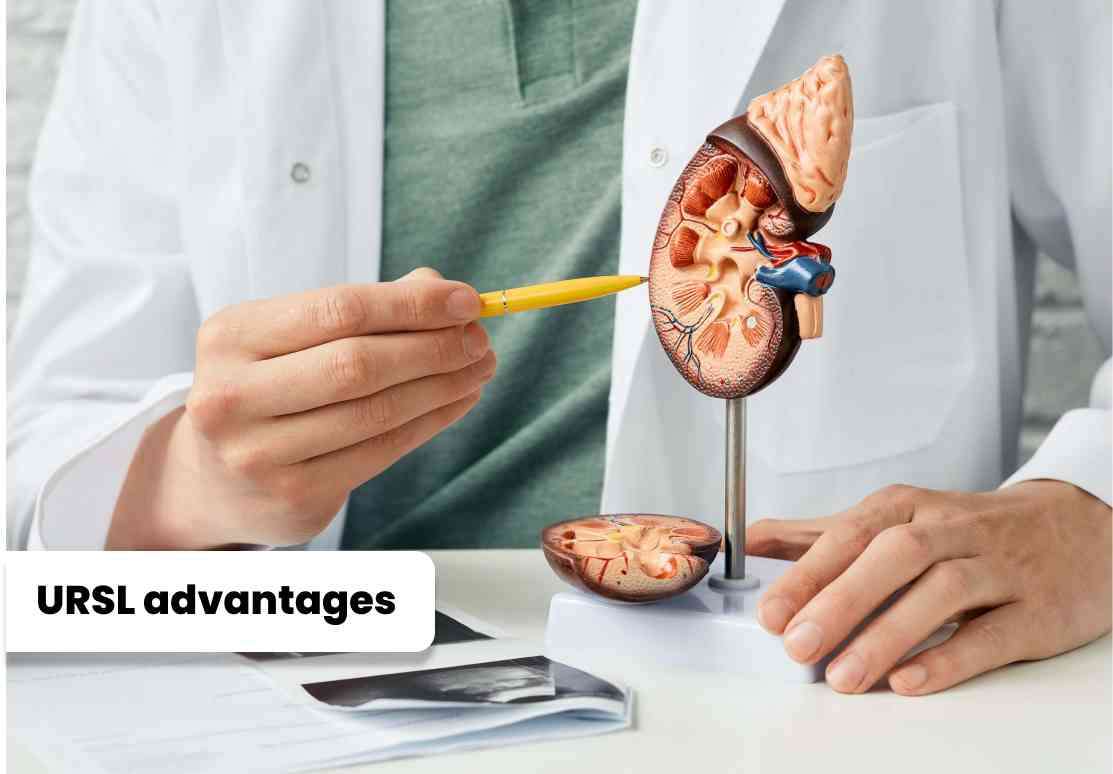URSL, short for
Ureteroscopic Lithotripsy, is a minimally invasive procedure performed to treat
kidney stones. It involves using a ureteroscope, a thin tube-like instrument
equipped with a camera, to visualize and access the urinary tract. The scope is
inserted through the urethra and bladder, up to the ureter, and sometimes even
into the kidney. By reaching the site of the stone, urologists can precisely
target and remove or break down the stone using various techniques.

URSL, short for Ureteroscopic Lithotripsy, is a minimally invasive procedure performed to treat kidney stones. It involves using a ureteroscope, a thin tube-like instrument equipped with a camera, to visualize and access the urinary tract. The scope is inserted through the urethra and bladder, up to the ureter, and sometimes even into the kidney. By reaching the site of the stone, urologists can precisely target and remove or break down the stone using various techniques.
Bilateral URSL refers to the procedure performed on both sides of the urinary tract, whereas left URSL specifically refers to treatment on the left side. This distinction is essential because kidney stones can occur unilaterally or bilaterally, affecting either one or both kidneys. URSL offers a tailored approach, allowing urologists to address stones in a specific location accurately. The primary goal of URSL is to eliminate kidney stones and alleviate associated symptoms. The procedure can be particularly effective for stones located in the ureter, as it provides direct access to this narrow tube connecting the kidney and bladder. By using small tools inserted through the ureteroscope, urologists can break down larger stones into smaller fragments or remove them entirely. Additionally, laser lithotripsy, a technique often employed during URSL, uses laser energy to pulverize stones, making them easier to pass naturally.

Bilateral URSL refers to the procedure performed on both sides of the urinary tract, whereas left URSL specifically refers to treatment on the left side. This distinction is essential because kidney stones can occur unilaterally or bilaterally, affecting either one or both kidneys. URSL offers a tailored approach, allowing urologists to address stones in a specific location accurately.
The primary goal of URSL is to eliminate kidney stones and alleviate associated symptoms. The procedure can be particularly effective for stones located in the ureter, as it provides direct access to this narrow tube connecting the kidney and bladder. By using small tools inserted through the ureteroscope, urologists can break down larger stones into smaller fragments or remove them entirely. Additionally, laser lithotripsy, a technique often employed during URSL, uses laser energy to pulverize stones, making them easier to pass naturally.
URSL also offers advantages over traditional surgical approaches. Unlike open surgery, URSL is minimally invasive, reducing the risk of complications and shortening recovery time. Patients can usually return to their daily activities within a few days, with minimal discomfort. Moreover, the use of ureteroscopes with high-definition cameras enhances visualization, allowing urologists to identify and treat stones more precisely.

URSL also offers advantages over traditional surgical approaches. Unlike open surgery, URSL is minimally invasive, reducing the risk of complications and shortening recovery time. Patients can usually return to their daily activities within a few days, with minimal discomfort. Moreover, the use of ureteroscopes with high-definition cameras enhances visualization, allowing urologists to identify and treat stones more precisely.
|
Serial Number |
City |
Minimum Cost (INR) |
Average Cost (INR) |
|
1 |
Mumbai |
40,000 |
1,00,000 |
|
2 |
Delhi |
35,000 |
90,000 |
|
3 |
Bangalore |
30,000 |
80,000 |
|
4 |
Chennai |
30,000 |
75,000 |
|
5 |
Kolkata |
25,000 |
70,000 |
|
6 |
Hyderabad |
25,000 |
70,000 |
|
7 |
Pune |
25,000 |
65,000 |
|
8 |
Ahmedabad |
22,000 |
60,000 |
|
9 |
Jaipur |
20,000 |
55,000 |
|
10 |
Chandigarh |
20,000 |
55,000 |
|
11 |
Lucknow |
18,000 |
50,000 |
|
12 |
Indore |
18,000 |
50,000 |
|
13 |
Kochi |
16,000 |
45,000 |
|
14 |
Coimbatore |
16,000 |
45,000 |
|
15 |
Bhopal |
14,000 |
40,000 |
|
16 |
Nagpur |
14,000 |
40,000 |
|
17 |
Goa |
12,000 |
35,000 |
|
18 |
Mangalore |
12,000 |
35,000 |
|
19 |
Trivandrum |
12,000 |
30,000 |
|
20 |
Guwahati |
10,000 |
25,000 |
|
Serial No |
Hospital Name |
Address |
Contact Number |
|
1 |
All India Institute of Medical Sciences (AIIMS) |
Ansari Nagar, Aurobindo Marg, New Delhi - 110029 |
91-11-26588500 |
|
2 |
Safdarjung Hospital |
Safdarjung Campus, Ansari Nagar, New Delhi - 110029 |
91-11-26165060 |
|
3 |
Post Graduate Institute of Medical Education and Research (PGIMER) |
Sector-12, Chandigarh - 160012 |
91-172-2747585 |
|
4 |
King George's Medical University (KGMU) |
Chowk, Lucknow, Uttar Pradesh - 226003 |
91-522-2257450 |
|
5 |
All India Institute of Medical Sciences (AIIMS) |
Saket Nagar, Bhopal, Madhya Pradesh - 462020 |
91-755-2672355 |
|
6 |
Nizam's Institute of Medical Sciences (NIMS) |
Punjagutta, Hyderabad, Telangana - 500082 |
91-40-23489000 |
|
7 |
Government Medical College and Hospital (GMCH) |
Sector 32, Chandigarh - 160030 |
91-172-2601023 |
|
8 |
Institute of Medical Sciences (IMS), Banaras Hindu University (BHU) |
Lanka, Varanasi, Uttar Pradesh - 221005 |
91-542-2367568 |
|
9 |
Osmania General Hospital |
Afzal Gunj, Hyderabad, Telangana - 500012 |
91-40-24600146 |
Please Wait..